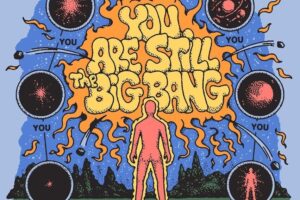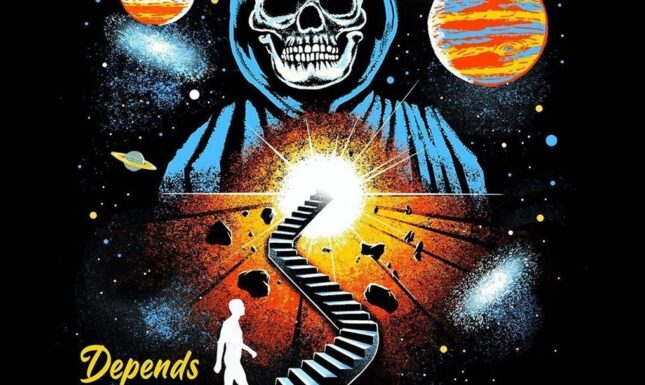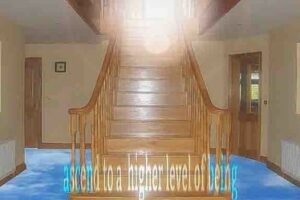Digital Theology: A Short Introduction through Art
Nobody knows exactly what is going on, especially when the subject is that of theology, belief and myth. In spite of doubt, some people try their luck and open up about their faith through art.
Spirituality in the Information Age is a rather puzzling phenomenon. However, just like in any other historical period, our current spirituality is deeply embedded in the socio-economic condition of our society. In short, our beliefs are but products of the technology and information to which we have access. Considering the importance of digital structures nowadays, it is crucial for us to fathom how and why our experience of Reality is so often equated to the functioning of a computer.

According to artist and theologian Dr. Sage Elwell, our culture is currently characterized by a ‘crisis of transcendence’. In which a collective shift of consciousness, caused by the implementation of digital structures, has caused world and self to be experienced as devoid of necessity. In sum, Elwell proposes that the digital revolution has promised absolute control and precision over the external world, leading to an elevation of human reason over nature. This, in turn, has exhausted any previous sense of refashioning of either the human experience or objective reality, as nothing seems to possibly transcend what we have created ourselves. In conclusion, Elwell’s theology indicates that currently, no common ground is capable of regulating behaviour and culture, leading to a crisis of objects of devotion and faith.[1]
Though Elwell’s remarks tend to focus on the rather gloomy side of our age, I believe that the loss of a common transcendent ground, brought into full force by the Digital Revolution, has finally democratized spiritual authority and truth. Whereas in the past knowledge of the True Nature of Things was reserved to a very exclusive class of people. In internet culture, such insight has been scattered throughout the whole of the human race, granting each individual a self-contained piece of Truth. The logic employed is that the universality of digital structures does not multiply nor reduce the natural world, but rather dwells in the array of possibilities supplied by this same world. Which suggests that virtual spaces are not mere simulations of Reality, but Reality itself. If Reality is subject to digital structures regardless of code, database and algorithms own particularities, then the same is true to its relation with individuals.
To get a clearer picture of what this particular theology looks like in practice, I propose a quick peek at some of the artistic movements that have been circulating the internet.
Artist Jake Foreman, Instagram user @_jakeforeman, is a good example of the lack of transcendent grounds making space for decentred spiritual discourse. Though his theme choice often draws on concepts shared by the New Age milieu, the imagery of his work puts an emphasis on individual intuition and interdependence between men and nature.


A similar case is seen on the work of Instagram user @bosssdog. The team tackles the subject of mortality and time. The image of the Reaper is present in most of the artworks, and seems - from my viewpoint - to symbolize the timelessness of Reality, juxtaposed with the ephemerality of human life.



In the more underground side of the internet's subcultural styles, lies what most people refer to as Dreamcore or Weirdcore. Both of the artworks above were extracted from the feed of Instagram user @dreamc0revoid. Most of these artworks lack credits, and are hard to trace back to its original creator. Nonetheless, the themes approached by the style frequently make allusions to a bygone heaven, which can be understood, in this context, as the downside of spiritual democratization. For in the process of universalizing spiritual truth, digital culture has shattered, as previously mentioned, any transcendent ground capable of prescribing the manners in which we ought to interact with the world. The result is a complete lack of certainty, and a strong longing for an unattainable paradise.
AngelsThe Youtube video Angels (2020) by artist Baphomet Kun, explores the idea of a nostalgic heaven further, by unitiying music, video and text. An ecstatic piece of art for those who acquired the taste, the video exposes the illusion behind such an ideal afterlife by contrasting it with bizarre collage and digitally distorted images.
Last but not least, I would like to draw attention to the circulating ideas of ‘Manifesting’ and ‘Your Thoughts = Your Reality’. Such notions have been explored by various internet users, one of them being the author of the Tik Tok video above, William Knight. Both concepts are vague, pseudoscientific, and lack a strong factual basis. Nevertheless, the principles are very similar to that of the Law of Attraction, in which thoughts are given extraordinary roles in, or made equivalent to, objective reality. It is possible to find similar ideas in traditional religious text, such as in Natural Liberation, where Padmasambhāva mentions that the world “arose from insubstantiality”, and is virtually an illusion of the mind.[1] But the application of these concepts vary drastically, which leads me to think that “Manifesting” is rather a symptom of a youth that has been left with no suitable theological symbol or principle, and is attempting to keep pace with a world that is becoming ever more rapid, precise and methodical, due to a one-sided implantation of digital technologies in human affairs.
In the end, it might very well be the case that “Manifesting” is the way for getting things done nowadays, simply because we may have somehow forged Reality like that. But, for the time being, what we can predict is that a decentralized spirituality may gradually pave the way for a more equal society, on the grounds that its ideal execution would imply equivalence between individuals. However, a partial or perverted execution of it would lead to a society in which individuals hold fast to the idea that the Absolute within them is the single facet of the Absolute, and should hence be regarded as the only one. Though both options strongly diverge from one another, they remain tied together by their attempt in locating the self against the immensity of the universe. A task that has been considered, by many philosophers, to be the ultimate goal of human existence.
For those who would like to dive a little further in the subject of theology, digital age, and art, I suggest you read Sage Elwell’s book Crisis of Transcendence (2010). Additionally, I highly recommend Robert Kuhn’s show Closer to Truth, where philosophers, physicists, psychologists and theologians are interviewed about the subject of cosmos, consciousness and meaning.
I would also highly recommend one to further explore the works of the previously mentioned artists. And to check some of the memes surrounding William Knight’s Tik Tok videos.
[1]Elwell, J. Sage. Crisis of Transcendence. Lanham, MD: Lexington Books, 2010, p. 32, 114-115
[2] “Chapter Four. Experiential Instructions on the Transitional Process of Dreaming” in Padmasambhava. 1998. Natural Liberation: Padmasambhava’s Teachings on the Six Bardos. Translated by B. Alan Wallace. Boston: Wisdom., p. 143
© Bernardo Bremm and Leiden Arts in Society Blog, 2021. Unauthorised use and/or duplication of this material without express and written permission from this site’s author and/or owner is strictly prohibited. Excerpts and links may be used, provided that full and clear credit is given to Bernardo Bremm and Leiden Arts in Society Blog with appropriate and specific direction to the original content.



0 Comments